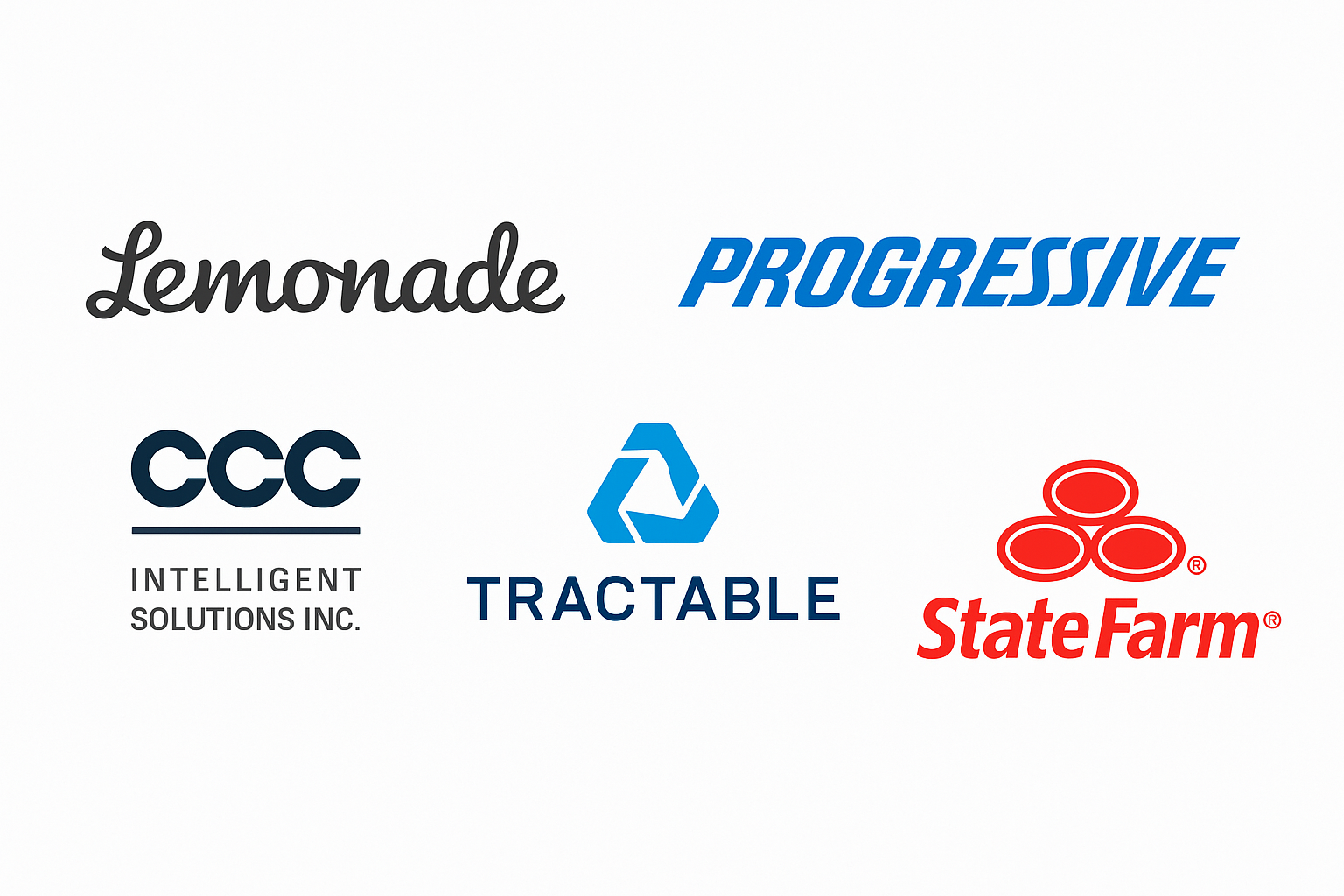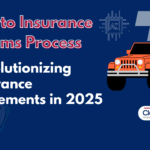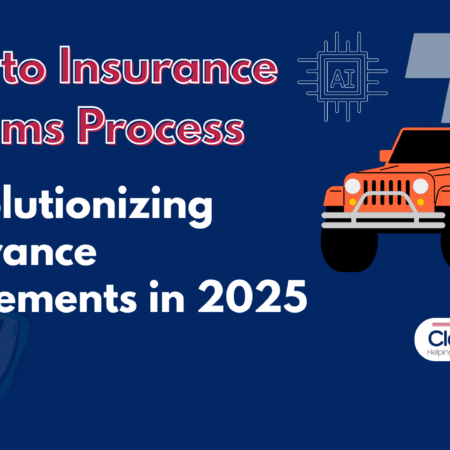In 2025, artificial intelligence in auto insurance claims processing is no longer experimental it’s essential. The industry is witnessing a major transformation as AI-powered auto claims solutions become the norm, replacing outdated systems that once relied heavily on manual input and paperwork. This evolution is reshaping the entire landscape, especially for insurers looking to optimize their operations and meet the rising demands of policyholders.
Today’s consumers expect fast auto insurance claims with AI assistance, instant communication, and mobile-first service. As a result, top insurance companies are investing heavily in AI-driven claims automation to streamline everything from damage estimation to fraud detection. These advanced systems are capable of analyzing accident photos, assessing vehicle damage, and generating repair cost estimates within seconds all with minimal human intervention.
The growing adoption of AI auto insurance claims process technology isn’t just about saving time. It’s about improving accuracy, reducing disputes, and enhancing customer satisfaction through smarter workflows. In an increasingly competitive market, insurers leveraging machine learning in auto insurance claims are setting new benchmarks for efficiency and trust.
As 2025 unfolds, artificial intelligence is not just changing how claims are processed it’s fundamentally redefining what modern car insurance looks like.
How AI is Changing the Auto Insurance Claims Process in 2025
In 2025, the intersection of artificial intelligence and insurance is creating a seismic shift in how auto claims are managed, verified, and settled. But beyond the technological buzzwords, there’s a deeper transformation underway one that’s redefining the trust dynamics between drivers and insurers, and forcing long-standing institutions to rethink what it means to serve policyholders in a digital-first world.
Unlike earlier attempts at digitization, which simply digitized paperwork or added mobile apps to outdated systems, today’s AI goes beneath the surface. It doesn’t just enhance the process it restructures it from the ground up.
From Prediction to Precision: AI’s Growing Role in Claim Decision-Making
One of the lesser-discussed shifts in 2025 is the move from reactive claims handling to proactive, predictive claims resolution. Insurers are no longer waiting for policyholders to initiate the process. Instead, AI systems embedded in connected vehicles and driving behavior platforms are preemptively identifying when a collision might have occurred, sometimes even before the driver makes the call.
For instance, a sudden deceleration, airbag deployment, or impact alert recorded by a vehicle’s telematics can trigger an automated pre-claim process. AI takes it from there verifying data sources, initiating outreach, and even booking inspections or repairs.
This isn’t just automation; it’s anticipation, a quality that traditional systems lacked. Policyholders today are surprised not by delays, but by how quickly things begin without them lifting a finger.
Read Also: How to File a Car Insurance Claim After Car Accident
Micro-Decisions and Real-Time Risk Adjustment
Another defining feature of the AI auto insurance claims process in 2025 is how it handles complexity at scale. Instead of applying blanket policies or relying on rigid claims rules, AI systems are now making micro-decisions tiny, rapid judgments based on dozens of data points gathered in real-time.
This includes:
- The location and severity of the accident
- Time of day and traffic data
- Historical repair costs in the driver’s area
- The policyholder’s driving behavior prior to the incident
All of these are factored in within milliseconds, enabling insurers to deliver more personalized, accurate claim outcomes. No longer are claimants judged purely by averages they’re evaluated as individuals, and rewarded for safe driving, consistent records, and proactive behaviors.

Reimagining the Role of Claims Adjusters
It’s easy to assume that AI is replacing human claims adjusters but that’s only partially true. While AI is handling more of the routine work, such as photo assessments or repair scheduling, human adjusters are evolving into strategic decision-makers.
In 2025, adjusters are less focused on filling out forms and more involved in:
- Overseeing large-scale liability cases
- Handling claims with conflicting or disputed data
- Serving as escalation points when AI models encounter ambiguity
In many ways, AI has elevated the role of adjusters. Rather than being phased out, they’ve become AI-augmented experts armed with dashboards, behavior models, and fraud flags to make better-informed calls.
Generative AI in Auto Insurance: Transforming Claims Automation
This IBM-produced video highlights how generative AI and machine learning are revolutionizing each stage of the auto claims workflow from photo assessments to payout decisions. A must-see for understanding enterprise-level AI capabilities in 2025.
Ethical Design and Consumer Transparency in 2025
As AI plays a bigger role in determining outcomes that directly affect people’s finances, ethics and transparency have become core concerns in the auto insurance sector. The best insurers in 2025 are those that openly disclose:
- When AI is making decisions vs. when humans intervene
- What types of data are collected, and how long it’s retained
- How claim decisions can be challenged or reviewed
Insurers are now building “AI transparency layers” into their systems interactive explanations that allow claimants to understand why a decision was made and how the system arrived at that conclusion.
This trend is largely consumer-driven. A growing percentage of drivers, especially Millennials and Gen Z, are demanding ethical tech practices. According to a recent survey by Accenture, 74% of customers say they would switch insurers for better transparency around AI usage.
Real-World Case Studies: How Leading Insurers Are Using AI Today
Artificial intelligence isn’t just theory it’s being used right now by some of the world’s largest and most innovative insurers. Here are real-world examples proving how the AI auto insurance claims process is transforming policyholder experiences in 2025:

✅ Lemonade Insurance – AI-Driven Claims Bot “Jim”
- Claim Approval Time: Lemonade’s AI bot, Jim, processed and paid a claim in just 3 seconds for a stolen coat in 2019.
- Claim Approval Rate: Approximately 30% of claims are now approved instantly by AI with no human intervention.
- Source: Lemonade Blog
✅ CCC Intelligent Solutions – AI for Damage Assessment
- CCC uses computer vision and deep learning to assess photos uploaded by policyholders, delivering repair cost estimates within minutes.
- In a 2023 whitepaper, CCC stated that over 14 million claims were processed using their AI-powered estimating tools.
- Insurers using CCC AI saw a 20–25% reduction in claims processing time.
- Source: CCC Official Site
✅ Progressive – Telematics + AI for Behavior-Based Claims
- Progressive’s “Snapshot” program combines AI with telematics data to generate behavioral risk profiles.
- Their AI engine flags claims involving high-risk behavior and automatically adjusts settlement procedures.
- According to Progressive’s 2024 investor report, the use of Snapshot has led to a 12% reduction in fraudulent claims.
- Source: Progressive Annual Report
✅ State Farm – AI-Powered Visual Estimation
- State Farm partnered with Tractable (a visual AI company) to automate collision damage assessments.
- As of 2022, this partnership was handling more than 50% of eligible photo-based claims using AI.
- Tractable’s AI achieves greater than 93% accuracy in damage estimation across 19 countries.
- Source: Tractable Case Study
✅ LexisNexis – Claims Data Analytics with AI
- LexisNexis Risk Solutions launched ClaimCompass, an AI-based solution that verifies claims data using historical claims records across insurers.
- This solution reduced the average claims lifecycle by 8–10 days, as reported in their 2023 data insights report.
- It also improved detection of duplicate and staged claims, saving millions for large insurers.
- Source: LexisNexis Risk Solutions

📊 Quick Result Data: Key AI Claims Stats
| Company | Highlight | Result |
|---|---|---|
| Lemonade | Instant claim approvals | 3 sec payout |
| CCC | AI damage assessments | 14M+ cases |
| Tractable | Visual AI accuracy | 93%+ |
| McKinsey | AI automation forecast | 70% claims by 2030 |
| Progressive | Telematics + AI | 12% drop in fraud |
Cross-Platform Integration: A Seamless Claims Experience
By 2025, the typical policyholder’s claims experience spans multiple platforms and channels. AI plays a pivotal role in unifying these touchpoints to create a seamless, frictionless journey.
- Voice-activated claims through smart home devices
- AI-powered virtual assistants within mobile apps
- Text-based claim updates via chatbots
- Cloud-based claim documents accessible across devices
The AI auto insurance claims process in 2025 is not just mobile it’s multi-sensory. Whether you’re driving a Tesla, using Alexa at home, or chatting with your insurer on WhatsApp, AI ensures your experience is consistent, personalized, and immediate.
Read Also: Check Status of Your Auto Insurance Claim Online in Minutes : 10 Pro Tips Speed Up Claim
Hyper-Personalized Claims and the Rise of “Nano Policies”
As AI gathers more granular data about driver behavior, lifestyle, and location, insurers are rolling out what’s known as “nano policies” micro-coverage options that activate and deactivate based on context.
For example:
- A delivery driver might activate coverage only during active work hours
- A family with multiple cars might receive claim-based discounts only for the vehicle in use
- Claims are settled differently based on whether the vehicle was used for commercial or personal purposes
The claims process adapts to these micro-coverage models, with AI adjusting parameters based on what type of nano policy was active at the time of incident. This trend is helping insurers offer lower premiums and faster resolutions to a wider range of drivers.
Conclusion: AI Isn’t the Future It’s the Now
As we move deeper into 2025, one thing is clear: AI is no longer just enhancing the auto insurance claims process it’s redefining the relationship between policyholders and providers. Efficiency, personalization, and ethical automation are no longer optional they are expected.
For drivers, this means shorter wait times, more accurate settlements, and fewer disputes. For insurers, it’s an opportunity to rebuild trust, reduce fraud, and operate at unprecedented levels of speed and precision.
In the end, AI in auto insurance isn’t about removing the human touch it’s about freeing it up to focus on the moments that matter most.









